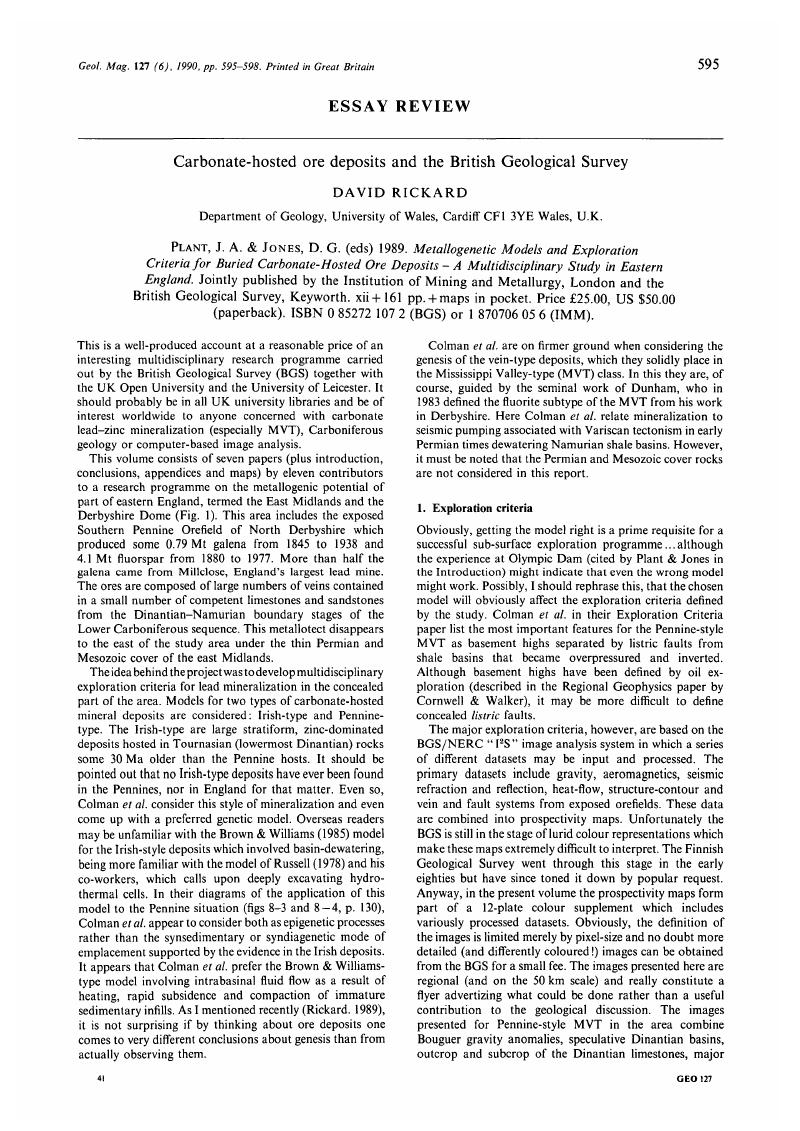No CrossRef data available.
Article contents
Carbonate-hosted ore deposits and the British Geological Survey
Published online by Cambridge University Press: 01 May 2009
Abstract
An abstract is not available for this content so a preview has been provided. Please use the Get access link above for information on how to access this content.

- Type
- Essay Review
- Information
- Copyright
- Copyright © Cambridge University Press 1990
References
Brown, C. & Williams, B. A gravity and magnetic interpretation of the structure of the Irish Midlands and its relation to ore genesis. Journal of the Geological Society of London 142, 1059–75.CrossRefGoogle Scholar
Dunham, K. C. 1983. Ore genesis in the English Pennines: A fluoritic subtype. In International conference on Mississippi valley type lead-zinc deposits. Proceedings volume (eds Kisvar-sanyi, G., Grant, S. K., Pratt, W. P. and Koenig, J. W.), pp.86–112. University of Missouri, Rolla Press.Google Scholar
Rickard, D., Coleman, M. & Swainbank, I. 1981. Lead and sulfur isotopic compositions of galena from the Laisvall sandstone lead-zinc deposit, Sweden. Economic Geology 76, 2042–6.CrossRefGoogle Scholar
Rickard, D. 1989. A Special Issue Devoted to Current Research on Mineral Deposits of Europe: Preface. Economic Geology 84, 997–1002.CrossRefGoogle Scholar
Russell, M.J. 1978. Downward-excavating hydrothermal cells and Irish-type ore deposits: importance of an underlying thick Caledonian prism. Transactions. Institution of Mining and Metallurgy, London section B, 87, B168–71.Google Scholar




